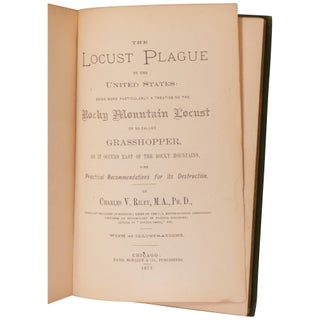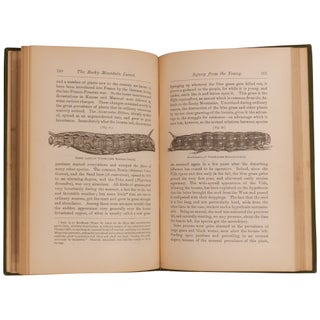The First Insect Apocalypse
The Locust Plague in the United States: Being More Particularly a Treatise on the Rocky Mountain Locust or So-called Grasshopper, As It Occurs East of the Rocky Mountains, with Practical Recommendations for Its Destruction
Notes: The extinction of the Rocky Mountain Locust through human action was an act of ecological destruction even greater than the better-known extinction of the passenger pigeon. In 1875, a swarm estimated at 12.5 trillion (!) insects spread over much of the Midwest and intruded into central Canada, devouring most of the crops and causing hundreds of millions of dollars in damage. The last major swarm appeared in 1877; by the turn of the century, the most populous insect in North America was extinct. That marked the beginning of the insect apocalypse that concerns entomologists today.
The author of this book was the state entomologist of Missouri. Here he presents the scientific knowledge about the locust, a chronology of historical swarms, a summary of locust legislation from the Midwest concerning it (including a Kansas law that conscripted residents to destroy young grasshoppers). Riley also reports on experimental efforts to kill the locusts and recommends active efforts to kill larva and young grasshoppers before they swarm.
No one understood at the time that the locusts were ordinary grasshoppers that, when under stress (like drought), transformed into social insects capable of mass reproduction and swarming. One of Riley's recommendations, active cultivation of the insect's habitat, worked—but by accident. Farmers' anti-locust efforts took a toll on their population, and then settlers, quite unknowingly, destroyed the relatively small natural habitat of the grasshopper form of the locust, sending it, and by extension the locust form, into extinction.
236 pages plus two double-page maps with overprinted color.
Edition + Condition: First edition. A very good copy in the original green pebbled cloth with a gilt grasshopper stamped on the front panel. Minor wear to the corners.
Publication: Chicago: Rand, McNally & Co., 1877.
Item No: #308191
Price: $500




